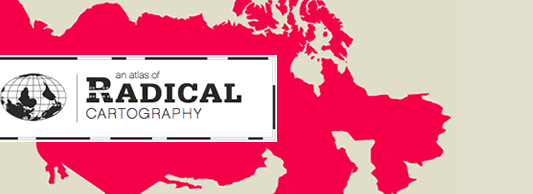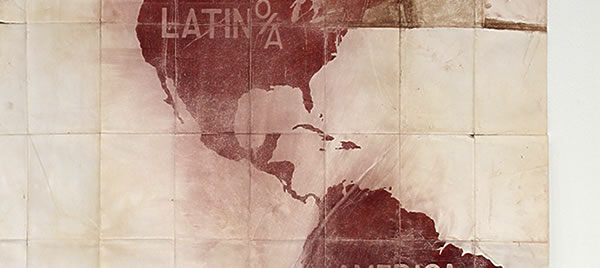


CONTENTS [click each to view]
INTRODUCTION
Alexis Bhagat & Lize Mogel
MAPS
Unnayan | Chetla Lock Gate, Marginal Land Settlement in Calcutta, 1984
Institute for Applied Autonomy with Site-R | Routes of Least Surveillance
Trevor Paglen & John Emerson | Rendition Flights 2001-2006
An Architektur | Geography of the Fürth Departure Center
Pedro Lasch | Guias de Ruta / Route Guides
Lize Mogel | From South to North
Jane Tsong | the los angeles water cycle: the way it is, not the way it should be and one day will be
the Center for Urban Pedagogy (CUP) | New York City Garbage Machine
Brooke Singer | The US Oil Fix
Ashley Hunt | A World Map: in which we see...
ESSAYS
Jai Sen | Other Worlds, Other Maps: Mapping the Unintended City
Institute for Applied Autonomy | Tactical Cartographies
Visible Collective & Trevor Paglen | Mapping Ghosts
Maribel Casas-Cortes & Sebastian Cobarrubias | Drawing Escape Tunnels Through Borders
Alejandro de Acosta | Latino/a America: A Geophilosophy for Wanders
Sarah Lewison | Our Land is Changing-- Soon Yours Will Be Too
Jenny Price, Jane Tsong, Ellen Sollod, Lize Mogel, DJ Waldie, Paul S. Kibel | Drawing (on) Water in Los Angeles
Heather Rogers | The Power of Garbage
Kolya Abramsky | Struggles Over Transition: Emancipating Energy?
Avery F. Gordon | A World Map
CREDITS

| Latino/a America: A Geophilosophy for Wanderers (excerpt) | Alejandro De Acosta I have always felt that the terms "Latino" and "Latina" could denote something other than an identity. Latinidad is an abstraction more abstract than that of nationality or race; and it is not the traditional denomination of any ethnic or kin group. If Latinidad names anything, it names the possibility - and no more than that! - of exchanges among people of varying nationalities, subjected to different racializations, bearing the histories of many ethnicities and kinships. Nietzsche writes "When the morning sun does rise, glowing like a god of wrath, and when the city does open, he may see in the faces of those who dwell there even more desert, filth, deceit, insecurity than there are outside the gates - and the day may be almost worse than the night." The terms "Latino" and "Latina" are more interesting, more powerful, if they denote the possibility of conversations and coalitions among people marginalized in various ways - geopolitical, racial, linguistic, sexual, and so on. These forms of marginalization could be expressed poetico-philosophically in the image of a city-state with closed gates, of exposure to predators and the elements; but this image is also literal and exact for many Latino and Latina wanderers. Or, again, these forms of marginalization could be expressed in the image of the hostility of citizens all too comfortable in their own belonging, all too hostile to outsiders, travelers, wanderers - and, again, this image is literal and exact in our current situation. [...]The physical, literally geographical exposure that these maps bear witness to does not go in the direction of a new centrality or universality for Latinidad. Rather, the maps suggest dispersal and difference, with the possibility of a conversation from margin to margin - the possibility of a freedom of reason so very urgent today, born from the wanderings of Latinos and Latinas across the continent. |